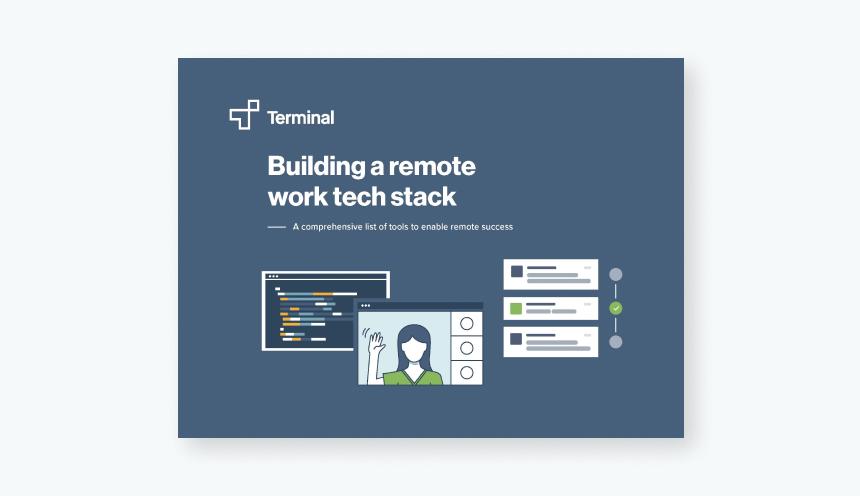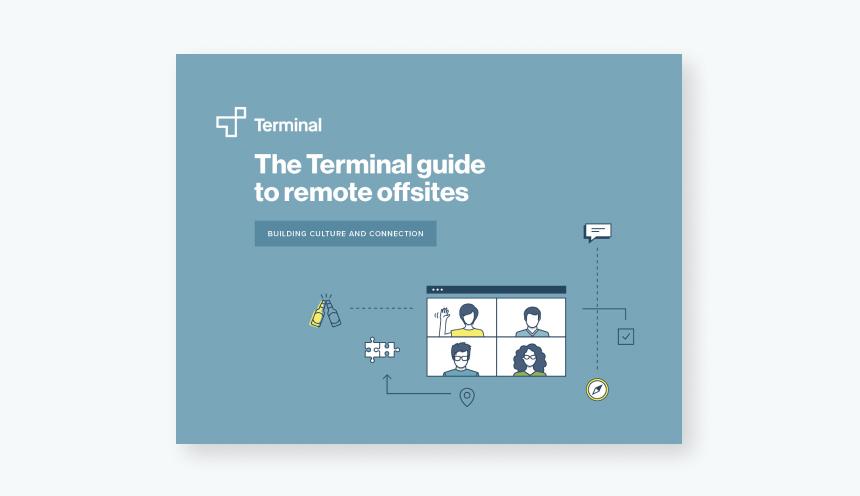
Remote how-to’s | Blog Post
Six Remote Work Benefits to Make Teams Happier & More Productive
Linzi Nield
Share this post
In the last year, companies and employees have been quickly thrust into remote work, regardless of their readiness for that shift. And guess what? Remote workers are more productive, cherishing the lack of commute, the flexibility to have more time at home, and working when it works for them. Our State of Remote Engineering Report found that eight out of ten engineers want options in the future for both working from home and from the office, and almost a third saying they want to remain remote 100% of the time. But, it’s not all perfect.
As many of us have experienced, remote workers have a unique set of needs. They need to work harder to feel integrated with co-workers, they miss the social aspects of the office, lunchtime walks around the block, the on-site gym, free lunches and snacks, comfortable workstations, and the ability to have quick hallway conversations. They are moving less and sitting more, and in some cases, their expenses are on the rise.
Working at home is simply different than working in the office. Employers must find ways to bring some of the benefits and support systems offered in traditional office settings into the homes of their employees and come up with new or different ways to support their teams.
Here are a few things to consider when planning your remote work benefits:
Home workstation ergonomics
Workstation assessments are highly encouraged. Injuries caused by poor workstation setup or using the wrong equipment (or even working from the couch or kitchen table) are considered workplace injuries, even if they happen at home. Providing information, tools, and support for remote workers as they set up their workstation can serve to prevent these injuries and provide much needed support and information to employees working from home.
Equipment stipends can make work and life easier. Combined with access to a virtual ergonomic assessment, companies can help determine what equipment employees need to work most productively and fund those purchases. A home workstation that works for each employee is a key remote work benefit.
Virtual gym memberships
For many of us, the shift to remote work has also come along with local gym closures. Even as things begin to open up again, employees are not all rushing back to take part in in-person classes. Without the ability to use in-office or local gyms, employees are looking for ways to keep moving, from home. Enter virtual fitness apps & memberships. There are a variety of programs available from individual apps to enterprise programs, delivered live, on-demand, and even offering access to family and friends to increase usage and up the social ante.
The main return of these offerings is not only having physically active employees, but the psychological benefits too: you are helping them cope with stress, avoid burnout and in turn, they will be more focused on their responsibilities.
Mental wellness support
Many employers are looking for ways to better support employees’ mental wellbeing. After all, employee mental health is key in maintaining and improving the organization. How can we know if the organizational culture is really focused on our people, if we are not making sure they are well taken care of?
Many companies have provided access to meditation apps designed to bring even the most inexperienced beginner through guided sessions to build mental resilience. Some have designated mental wellness days; encouraging employees to take the time they need to support mental wellness in whatever shape that may take for the individual.
Other organizations are offering or enhancing their Employee & Family Assistance Programs with free short-term counselling and other benefits such as clinical counselling, psychotherapy, and psychiatric support – not only for the employee but their dependents as well.
Home office expenses, such as electricity, internet, or cell phone
Increased internet usage, or the need to enhance the internet service to handle the demands of a workday, are a reality for many. Some are required to use their personal cell phone because company lines are non-transferrable to the home workspace. Others are experiencing increased electricity costs due to the extra time spent at home during the day.
Some or all of these costs should be covered, at least in part, by the employer for a comprehensive remote work benefits plan. Local laws in California, Canada, Mexico,Colombia, and Chile, ensure that companies cannot expect employees to cover the cost of doing business. Companies are expected to reimburse all or a portion of costs employers would incur if the employee was working out of the office. Even if it is not mandatory, covering a portion of these costs for your employees can help ease their financial burden.
Virtual team building + celebrations
As organizations shift to a remote-first philosophy, we see companies hosting engaging and fun virtual events that have all of the same highlights, such as awards, announcements, fun, and games, only delivered in a different way. Even though nothing can really replace seeing people face to face, these events have challenged companies to really engage their teams when we can’t all be together. Some examples of remote engagement activities include virtual escape rooms, magicians, cooking classes, wine pairings, and paint nights! Surprises are always welcome too. Celebrate promotions, successes, birthdays, a new baby, and any other occasion by sending surprise boxes, gift cards, etc.
Food
While many in-office employees have (or had!) the benefit of fresh food cafeterias, free snacks, and weekly lunches, people who are working from home don’t have those luxuries. In fact a study done in the UK found that lunch has declined in quality by 34% and some 39% reported eating a bag of chips for lunch on a regular basis. Enter companies who are providing weekly or monthly meals, whether through stipends, vouchers, or reimbursement, full meals or snacks.
Building better remote work benefits
If you think about your offerings with a remote-first mentality, you’ll see that simply adapting what you offer in-office just isn’t enough. Employees working out of their home have unique needs and challenges that employers need to understand, and when companies rise to the challenge of deeply understanding these needs and finding creative ways to meet them, it sets the baseline for a successful transition to a fully engaged and supported remote workforce.


